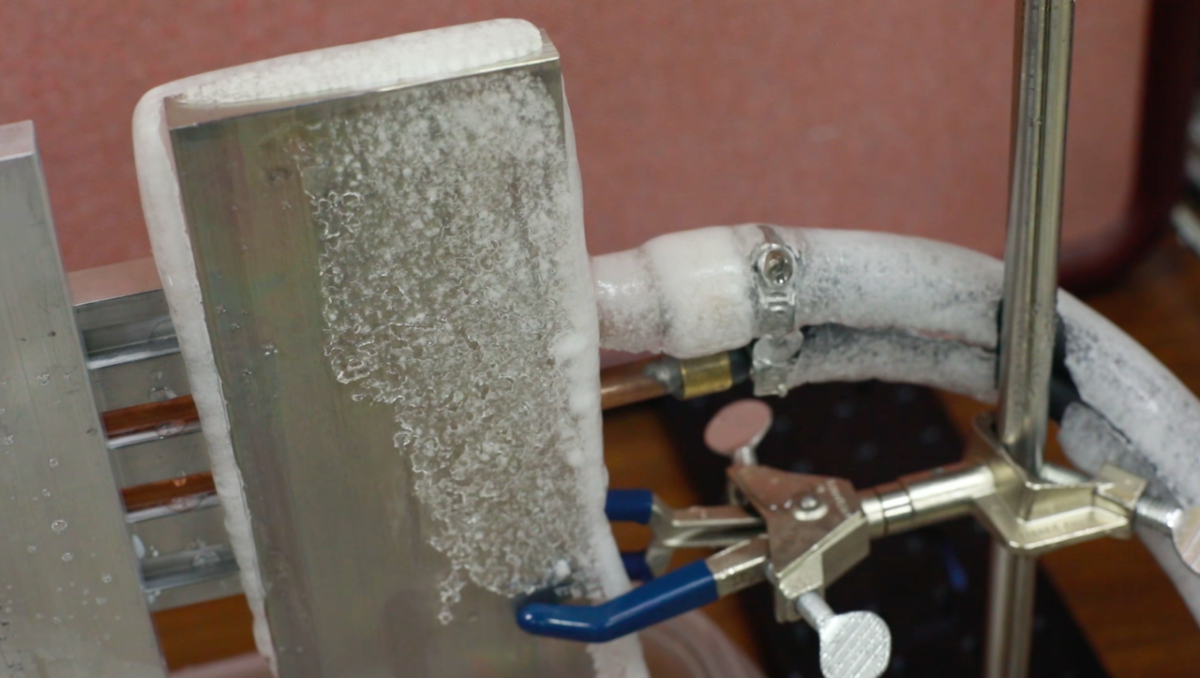Jonathan Boreyko turned on the defroster in his car one cold winter morning and waited for the ice on the windshield to melt. And kept waiting.
Boreyko, an assistant professor in the Department of Biomedical Engineering and Mechanics in the College of Engineering, knew there had to be a more efficient, quicker way to melt the frost.
So he developed one.
Using what he calls “a very simple chemical recipe,” Boreyko has found a way to defrost surfaces 10 times faster than normal. Although the method has so far only been tested on an aluminum surface for the initial study, Boreyko hopes to adapt it to other surfaces, such as glass windshields.
“My idea came from the realization that frost is simply dew droplets that have frozen over into ice — so if dew droplets can be highly mobile on a superhydrophobic surface, maybe frost can be too,” Boreyko said. “Sure enough, when frost formed on our chilled superhydrophobic aluminum, the ice was able to trap air pockets underneath itself just like with liquid water.”
Read the full story and view my photos and videos via VT News
